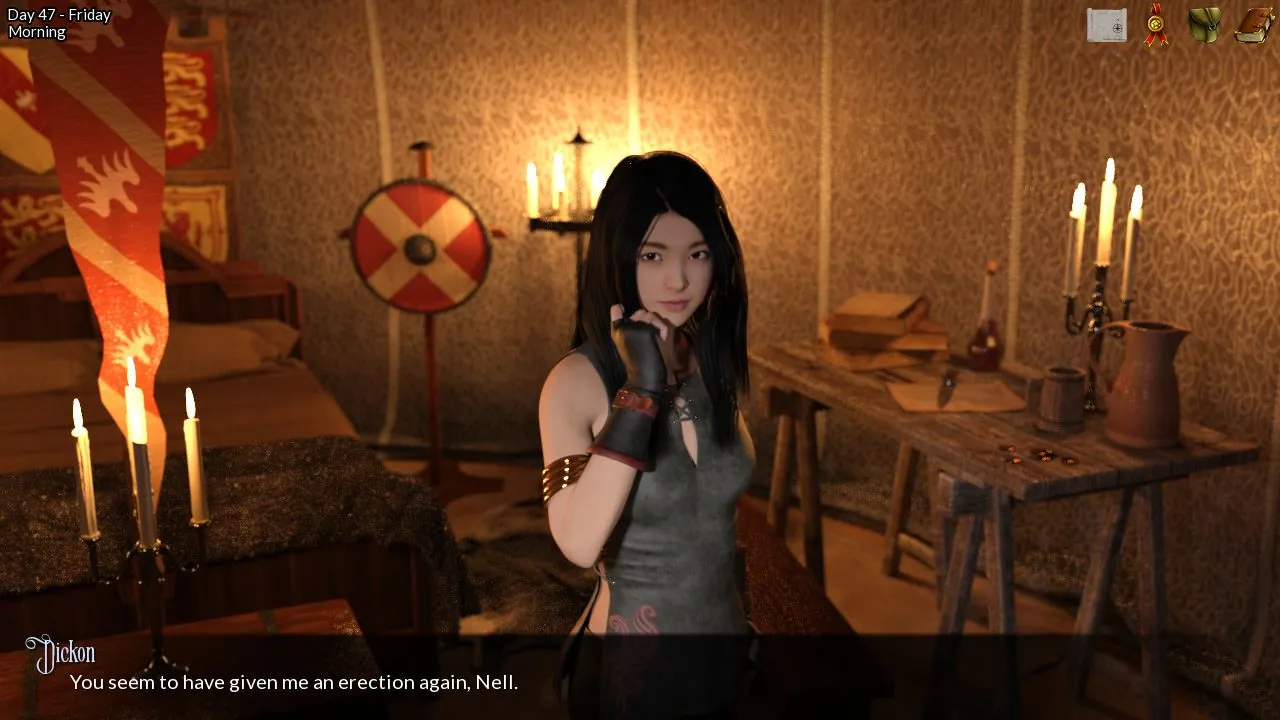
Say It Again
Play Say It Again
Say It Again review
Unpacking Narrative Design and Player Engagement in Modern Interactive Fiction
The visual novel landscape has evolved dramatically, with titles like Say It Again pushing boundaries in adult-oriented storytelling. This immersive experience combines choice-driven narratives with sophisticated character development, creating a benchmark for mature interactive fiction. Through three playthroughs and community analysis, we’ll examine what makes this title stand out in crowded digital shelves while maintaining ethical content practices.
Core Gameplay Systems and Narrative Architecture
Branching Dialogue Mechanics and Player Agency
Let’s cut to the chase: if your choices in a game don’t matter, why bother? 😤 That’s where Say It Again flips the script. Imagine a narrative branching system so intricate that picking between “I’ll help you” and “Figure it out yourself” doesn’t just tweak a line of dialogue—it reroutes entire character arcs. I once spent three playthroughs romancing the brooding artist character, only to realize my sarcastic replies in Chapter 2 locked me out of his heartfelt confession later. Talk about player choice consequences!
The game’s dialogue trees aren’t just “good vs. evil” binaries. Instead, they’re layered with tone, timing, and subtle context clues. For example, in one scene (check out the screenshot below), choosing to comfort a friend during a panic attack opens a new story path about their childhood trauma. But if you brush it off? That relationship meter plummets faster than my Wi-Fi during a storm. 🌩️
| Choice Type | Impact Level | Example Outcome |
|---|---|---|
| Emotional Support | High | Unlocks hidden backstory scenes |
| Neutral Response | Medium | Delays character development |
| Dismissive Reply | Critical | Permanently closes romance routes |
Lead writer Mara Chen puts it best: “We wanted players to feel the weight of their words—like they’re crafting a novel only they could write.” Compared to Life is Strange’s rewind gimmick or Monster Prom’s chaotic randomness, Say It Again forces you to live with your decisions. No take-backsies. 😬
Character Relationship Algorithms Explained
Ever tried dating someone who’s really into astrology? 🧐 Yeah, Say It Again’s character affinity algorithms are that nuanced—but replace zodiac signs with 200+ variables tracking everything from gift preferences to how often you interrupt their monologues. Each character has a hidden “trust score” that determines which scenes you unlock. For instance, the stoic detective won’t confess her secrets unless you’ve consistently chosen dialogue options valuing honesty over humor.
Here’s the kicker: these adult visual novel mechanics aren’t just about romance. During my second playthrough, I focused on building a platonic bond with the protagonist’s sarcastic roommate. Turns out, maxing out her “friendship meter” unlocked a side plot where we start a punk band—complete with a cringey garage performance. 🎸
| Character | Key Affinity Triggers | Route Unlock |
|---|---|---|
| Alex (Artist) | Empathy, Artistic Praise | Secret Gallery Show |
| Jasmine (Detective) | Honesty, Logical Solutions | Cold Case Resolution |
| Riley (Roommate) | Shared Humor, Loyalty | Punk Band Subplot |
Pro tip: character affinity algorithms respond to patterns, not one-off choices. Bring your A-game consistency—or prepare for awkward silences.
Content Moderation Systems and User Controls
Let’s address the elephant in the room: mature content filters aren’t just a checkbox gimmick here. 🛑 Say It Again treats them like a customizable menu. Want to skip all steamy scenes? Toggle the “Fade to Black” option. Prefer to adjust intensity levels for different characters? There’s a slider for that. I tested this by replaying a tense confrontation scene three ways: full drama, implied tension, and PG-rated diplomacy. Each version felt distinct, proving that less can still be more.
But here’s what blew my mind: the 72-hour cooling-off period for sensitive decisions. When you’re prompted to make a choice with heavy emotional stakes (think: confessing feelings or confronting a betrayal), the game literally locks that option for three real-world days. Developer Luis Torres explains: “We want players to sit with their instincts. It’s not about restricting agency—it’s about respecting the gravity of these moments.”
🚨 Hot take: This system should be industry standard. No more drunken 2 AM choices you’ll regret by sunrise!
Compared to Monster Prom’s “goof now, cry later” approach, Say It Again balances freedom with mindfulness. Whether you’re here for the slow-burn storytelling or the adult visual novel mechanics, you’re in control—without feeling babysat.
Why This All Matters
At its core, Say It Again isn’t just a game—it’s a masterclass in narrative branching system design. Every choice matters, every relationship evolves, and every boundary respected. Whether you’re here to flirt, philosophize, or fumble through heartfelt connections, this is interactive fiction that treats you like an adult—without forgetting how to have fun. 😉
Now go on. Your next big decision is waiting.
Say It Again demonstrates how adult-oriented games can implement robust safety features without compromising narrative depth. Its layered approach to player agency and community-driven content moderation sets new industry standards. For developers and enthusiasts alike, this title offers valuable insights into the future of responsible interactive storytelling. Ready to analyze gameplay systems yourself? Download our free relationship path calculator tool below.













